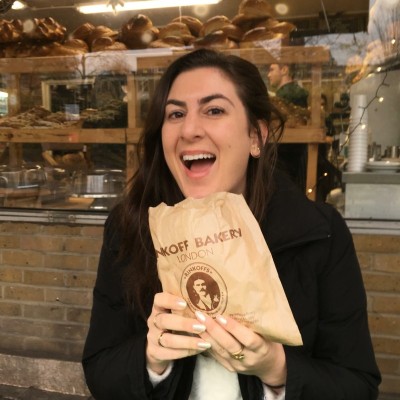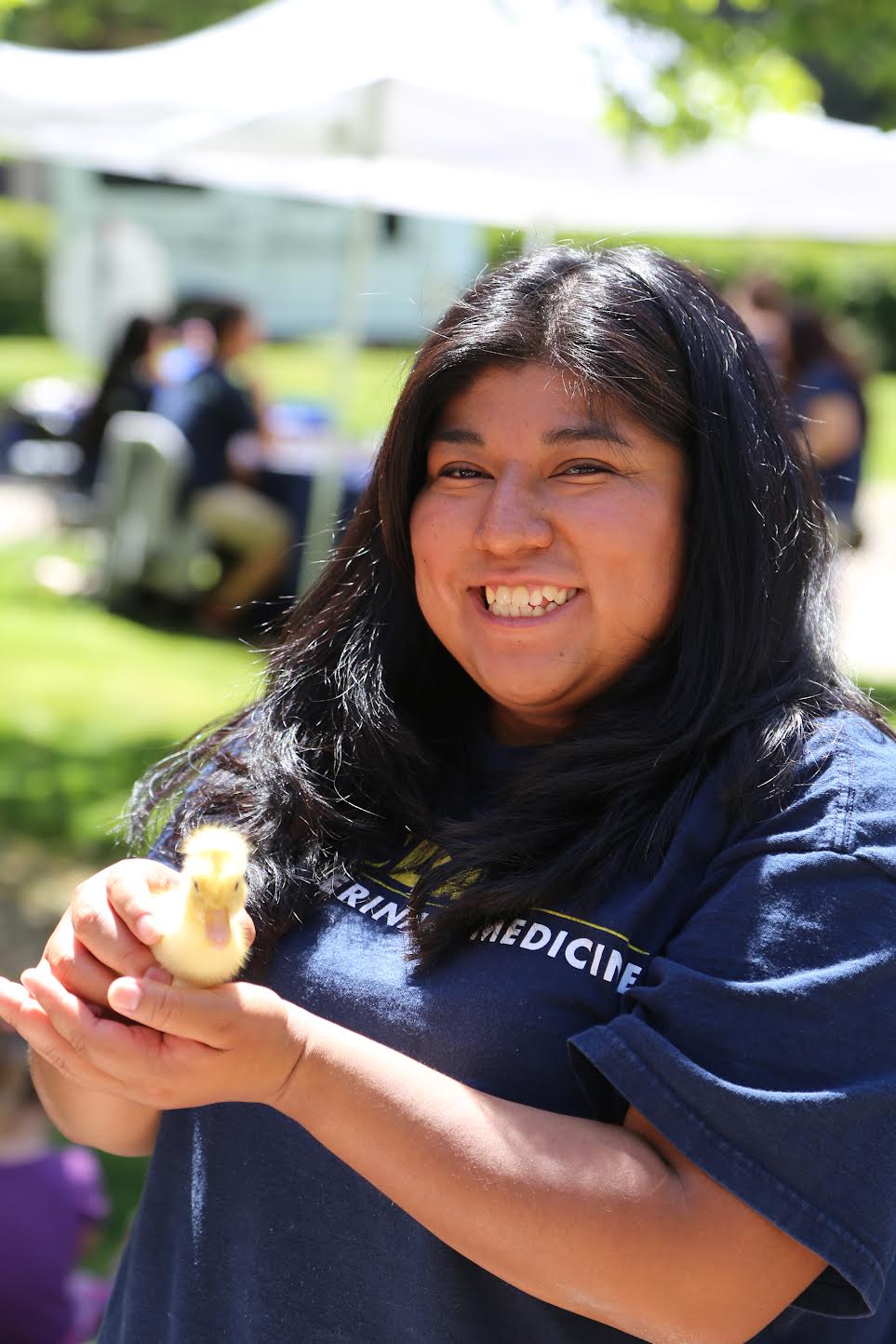Myrna Cadena
Featured Food Systems Researcher
At the unusual intersection of animal health and computational social sciences is the work of Myrna Cadena, a PhD candidate studying animal biology at the University of California-Davis. She and her professor, Dr. Maurice Pitesky, have launched an innovative new mobile app that could help thousands of backyard and small-scale poultry producers across the country advance biosecurity in their operations.
The importance of preventing disease and infection among these small-scale poultry producers was apparent during COVID, when disrupted supply chains heavily impacted large meat and egg producers. The U.S. food system's reliance on these big producers led to the empty grocery store shelves experienced by many in those uncertain times. Myrna explains that the vulnerability of these large operations has continued to show itself since then. "Now we're seeing a lot of outbreaks of highly pathogenic avian influenza. In California, that virus has leaked into commercial facilities before, which has led to the mass culling of millions of birds across the US. This has led to an increase in egg prices, so lots of people weren't able to buy as many eggs. But [people who] had their backyard chickens were doing okay."
Enter Community Chicken. The app, intended to strengthen this crucial alternative source of eggs and poultry, consists of six learning components - nutrition, bird behavior, health assessment, vaccinations, husbandry, and biosecurity. Users can watch short informational videos that give demonstrations of biosecurity practices, some of which include how to vaccinate a chicken or how to set up a chicken coop that prevents disease transfer from wild birds. There is also a chat feature that connects users to an expert should they have any questions. For now, those experts are, in fact, Myrna and Dr. Pitesky themselves.
A native of the fairly urban city of San Diego, Myrna did not foresee a career in agriculture. "I wanted to be a veterinarian. I always loved animals. And so that was my dream for a long time. I decided to go to UC Davis when I was ready to go to college [and] I thought, 'I'm going to be a vet for cats and dogs.'" This dream changed after she began working with livestock through internships. "That wasn't even on my radar. I wasn't even involved in [4-H] ... when I was younger."
As she came closer to graduating with an equine specialty, a stint in UC Davis' avian science facilities sparked yet another revelation - she loved working with the birds. Out of all the birds housed in the avian facility, from orange-winged amazons and cockatoos to quail, she found that she had an affinity for a less exotic member of the avian world - the chicken.
"Working with chickens was something that I was already comfortable with. And I really liked it. I thought it was such a cool field because there are so many areas that you can go into with chickens. You can go into small-scale backyards or really large-scale [commercial facilities] with thousands of birds in one barn." She decided to return to UC Davis for a Master's degree in avian sciences and began her work in Dr. Pitseky's lab. "That's where I started to see [that] this is definitely where I want to stay."
Dr. Pitesky's community-based work in the university's extension branch appealed to Myrna as well. "That's where I found my other interests - extension. Working with the community, versus [becoming] a professor who's teaching college students. That was something else I found along the way; that I liked working with chickens and with the community."
Fitting then, that a speaker from US Davis' communications department would spark Myrna's idea for Community Chicken. "Dr. Jingwen Zhang was doing similar work where they utilize social support to motivate people to exercise. And I thought, 'That's something we could use with chickens.'"
One of the issues that she and Dr. Pitesky had experienced in their work was the difficulty of reaching communities of small chicken farmers throughout California. Myrna explains that in all of California, there are only two poultry specialists, one of whom is Dr. Pitesky. The other is also based at UC Davis in Northern California. This posed a problem. "Some of the diseases that we've dealt with, for example, Newcastle disease, mainly affected Southern California. So that was [a] challenge. Getting information and helping people was really hard because we're all the way up in Northern California and everything is happening down there." Myrna realized that the kind of work that Dr. Zhang was doing could bridge this gap, and the concept of Community Chicken was born.
It has been a long road, but the app is now live and a study is underway to shed light on which features are effectively motivating users to follow good biosecurity practices. The process of creating Community Chicken has caused Myrna to think about what's ahead for her.
"I'm really interested in the social aspect now. Before I was more focused on the bird itself, the husbandry. And now, I would like to venture into the field of social science and what we can do to actually nudge people to change their behaviors."
Author: Ariana Lipsman | June 22, 2024
* * *


Enter Community Chicken.
The app, intended to strengthen flocks of backyard chickens, a critical alternative source of eggs and poultry consists of six learning components:
* nutrition,
* bird health,
* health assessment,
* vaccinations,
* husbandry,
* biosecurity.